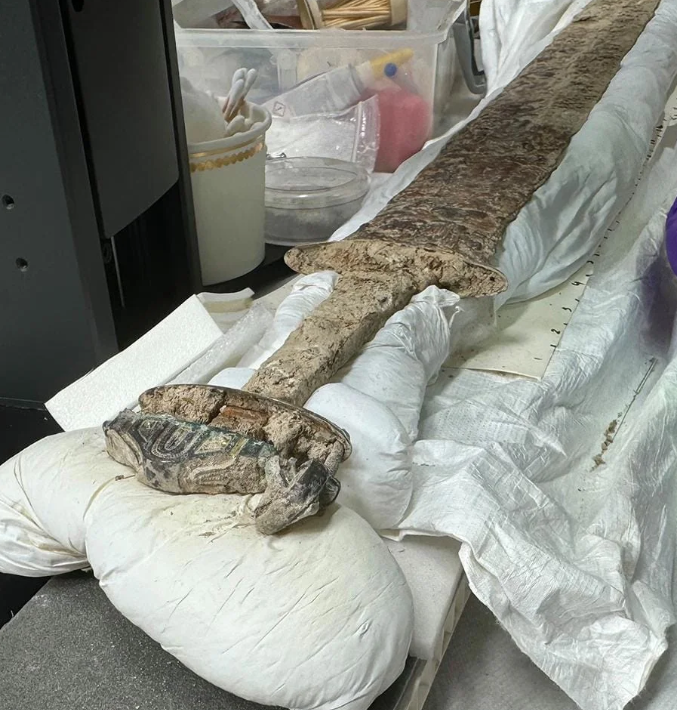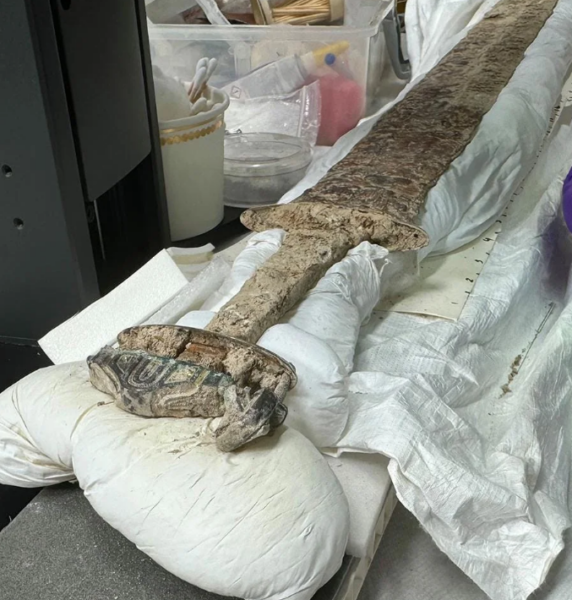#Great #Discoveries #SixthCentury #Sword #WorthPoint

Image Source: Professor Alice Roberts/BBC/Rare TV via Archeology News
Archaeologists recently unearthed a sixth-century sword in a cemetery near Canterbury, England. Lead archaeologist Professor Duncan Sayer of the University of Central Lancashire described the discovery as “really incredible, in the top echelons of swords, an elite object in every way.”
Sayer noted that the sword is “a pinnacle of Anglo-Saxon craftsmanship” partly due to its “remarkable condition ” and distinct features.
Along with decorative patterns and an inscription, the sword has a ring attached to its pommel (the cap at the end of a sword). This ring could symbolize an oath to a king or another high-ranking figure. It indicates that the weapon may have belonged to an elite member of society.
The sword has been compared to the Sutton Hoo sword. Discovered in Sutton, England, in 1939, the Sutton Hoo sword is made primarily of iron and features a gold pommel. It was buried in a wooden scabbard sometime in the seventh century, which helped keep the sword’s blade shining bright for over 1,000 years.
To date, archaeologists have found 12 graves in the cemetery near Canterbury and estimate there could have been up to 200 burials in the area. In addition to the sword, they have found spears, shields, and other weapons in the cemetery. Along with these items, they discovered a gold pendant engraved with a dragon or serpent, which may have been a gift or heirloom.
Those who want to view more sixth-century swords can check these out in our WorthPoint Price Guide.
WorthPoint—Discover. Value. Preserve.
Dan Kobialka is a self-employed content writer and editor with about a decade of experience. He produces content across a wide range of industries, including antiques, insurance, and real estate. To learn more about Dan, please visit his website.
WorthPoint—Discover. Value. Preserve.




